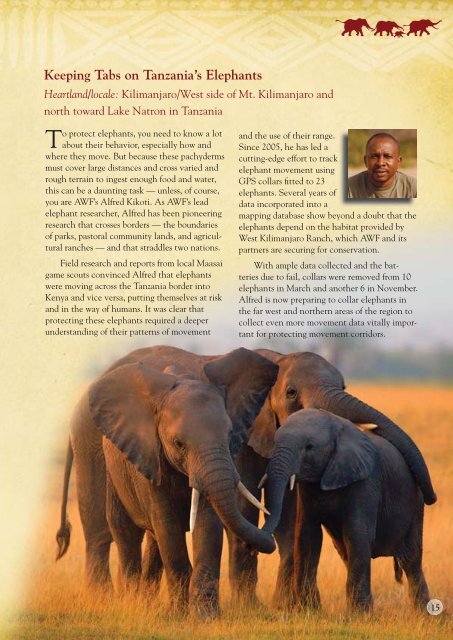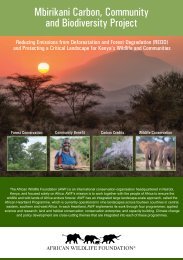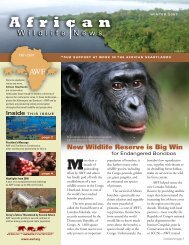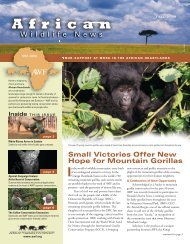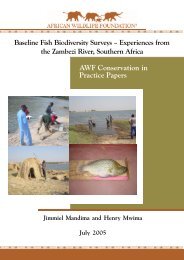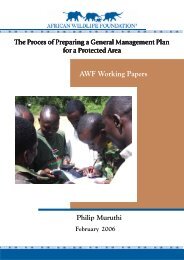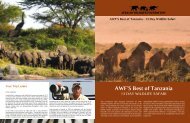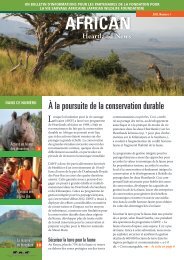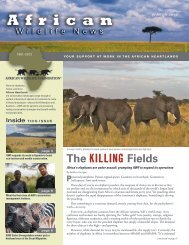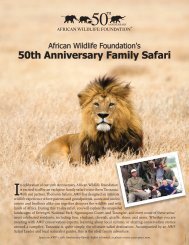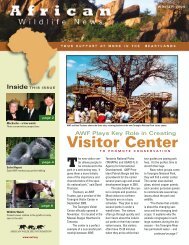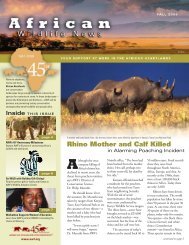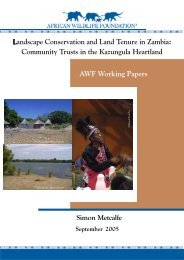Annual Report 2008 - African Wildlife Foundation
Annual Report 2008 - African Wildlife Foundation
Annual Report 2008 - African Wildlife Foundation
You also want an ePaper? Increase the reach of your titles
YUMPU automatically turns print PDFs into web optimized ePapers that Google loves.
Keeping Tabs on Tanzania’s Elephants<br />
Heartland/locale: Kilimanjaro/West side of Mt. Kilimanjaro and<br />
north toward Lake Natron in Tanzania<br />
To protect elephants, you need to know a lot<br />
about their behavior, especially how and<br />
where they move. But because these pachyderms<br />
must cover large distances and cross varied and<br />
rough terrain to ingest enough food and water,<br />
this can be a daunting task — unless, of course,<br />
you are AWF’s Alfred Kikoti. As AWF’s lead<br />
elephant researcher, Alfred has been pioneering<br />
research that crosses borders — the boundaries<br />
of parks, pastoral community lands, and agricultural<br />
ranches — and that straddles two nations.<br />
Field research and reports from local Maasai<br />
game scouts convinced Alfred that elephants<br />
were moving across the Tanzania border into<br />
Kenya and vice versa, putting themselves at risk<br />
and in the way of humans. It was clear that<br />
protecting these elephants required a deeper<br />
understanding of their patterns of movement<br />
and the use of their range.<br />
Since 2005, he has led a<br />
cutting-edge effort to track<br />
elephant movement using<br />
GPS collars fi tted to 23<br />
elephants. Several years of<br />
data incorporated into a<br />
mapping database show beyond a doubt that the<br />
elephants depend on the habitat provided by<br />
West Kilimanjaro Ranch, which AWF and its<br />
partners are securing for conservation.<br />
With ample data collected and the batteries<br />
due to fail, collars were removed from 10<br />
elephants in March and another 6 in November.<br />
Alfred is now preparing to collar elephants in<br />
the far west and northern areas of the region to<br />
collect even more movement data vitally important<br />
for protecting movement corridors.<br />
15


